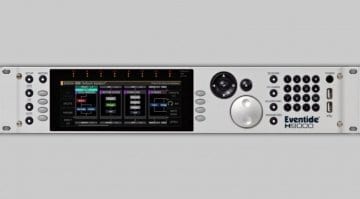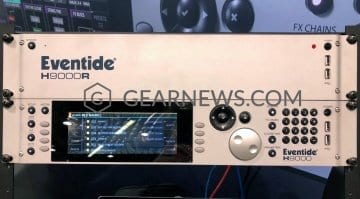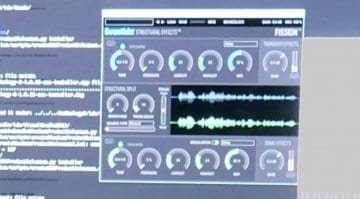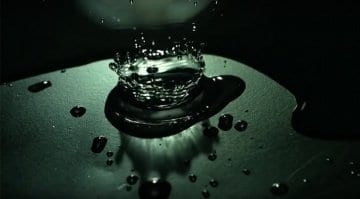- 8-Channel Analog In/8-Channel Analog Out
- (2) XLR Analog In / (2) XLR Analog Out
- MIDI In, Out, and Thru
- 4 Female Type 2.0 USB ports
- 1 USB Type B port, allowing 16 channels of USB audio in & out
- 1 Ethernet port
- (2) ¼” Expression Pedal jack
- (2) ¼” Relay jacks
- MIDI In, Out, and Thru
- Word Clock In/Out
- Optical In/Out
- S/PDIF In/Out
- AES/EBU In/Out
- (3) Expansion I/O slots (For optional DANTE, MADI, and AVB)
Eventide rolls out H9000 hardware effects processor – the pinnacle of a legacy?
In a world of affordable and truly convincing software effects, hardware effects processors no longer command the relevance they used to. However, pro gear heavyweights like Eventide, that maintain a formidable portfolio of studio plug-ins to be in touch with the times, have built their brand and legacy on the backs of expensive, no-compromise rack units like the H-series effects processors.
Having Eventide proudly step up and unveil the H9000, a no-holds-barred FX processor and the pinnacle in a series of what’s considered legendary studio gear, is a bold and impressive move. Considering the market for such gear is comprised of a very small niche of big-time, big-spending audio professionals; and having in mind the research and development expenses involved in bringing this product to life, Eventide better have a very good reason to be getting into this.
Here’s one: aside from being a cutting-edge FX processor, the H9000 is a statement to the industry. Eventide is still big and relevant enough to honour its hardware legacy and service its long-time fans by pushing an all-out premium FX processor in an industry dominated by software. Even if a computer can do virtually all the H9000 can, the presence of this unit demands a massive level of respect for Eventide.
Speaking of computers, the H9000 is a digital effects processor, which means it’s a de-facto computer in a box. Of course, running software algorithms on computer chips is merely a means to an end – the sound quality associated with Eventide. The H9000 is powered by four ARM chips for eight times the processing power of its predecessor, the H8000.
Connectivity
In connectivity terms, there are 8 channels of analog audio and 16 channels of digital audio over USB; AES/EBU connections, ADAT, as well as optional MADI, Dante, and Ravenna connections for standard audio networking. Here’s a more comprehensive list:
With its enhanced computing power, the H9000 is able to process multiple audio tracks at once and gets the addition of FX Chains – up to four effects can be stacked and flexibly routed in patches. The unit can be operated from the panel or the Emote application & plug-in for Mac and PC. Eventide have also revealed that the H9000 features 2017 effects, which should cover any conceivable situation.
At this time, we don’t get to know what new effects Eventide has come up with. Considering how the H9000’s ancestors, going way back to the 90’s monolithic H3000, already had a grip on pretty much everything imaginable, we assume the company must is going to be more experimental than usual – especially given all that processing power!
Price and availability
The H9000 is currently available in limited numbers, with general availability scheduled for the end of March 2018. The processor will be sold in two variations – Standard with full front panel control, priced at $7000; and blank front panel H9000R, priced at $5000. Eventide will be demonstrating the unit at the AES New York convention, held between October 18-20 in the USA.










